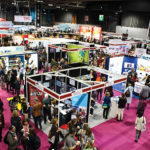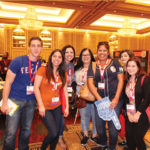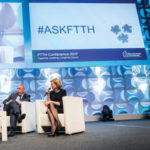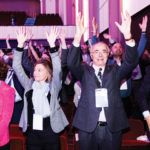
The Annual Meeting draws scientists and students from academia, industry, government, and professional education, according to Trina Armstrong, ASCB’s director of meetings. “Most of our attendees have Ph.D.s or are in doctoral programs,” Armstrong said, “but we also attract M.D.s and a growing number of engineers, mathematicians, computer scientists, physicists, and other professionals who are crossing over into new biology technologies.”
CHALLENGES
With a large portion of research biologists and academics who rely on funding from government grants or university budgets, Armstrong’s biggest challenge is always “getting people to the meeting.” The federal budget sequestration has made this especially difficult, and many participants only have the budget to attend one meeting per year. “They often choose to attend a smaller, more focused meeting within their particular research area,” Armstrong said. “Our challenge is to design a scientific program that relates to all life scientists.”
Armstrong still expects a less than 8-percent decrease from the 5,530 attendees and 387 exhibitors who participated in ASCB’s 2012 Annual Meeting in San Francisco, “where there is a much higher concentration of life scientists,” and which is closer for visiting attendees from Asia. “New Orleans does not have a large life-science community locally..,” Armstrong said. “Still [it is] fairly easy to reach and is a walk-able city, both of which are key criteria for our meeting participants.”
INITIATIVES
Committed to promoting education in the biosciences, ASCB teamed up with Dan Fletcher, Ph.D., a bioengineering professor at the University of California, Berkeley, to donate CellScopes — high-resolution microscope optics that can be fitted to iPads — to classrooms in New Orleans. “We appealed to ASCB members for donations, and they responded with over $15,000 in a matter of days,” Armstrong said. The teacher who is selected and his or her students (likely from grades four to six) will attend the Annual Meeting and receive training on the devices.
ASCB is also implementing a social-media campaign to help 50 student members get to the meeting, contributing gas money to those driving from within 500 miles. “In order to qualify, students must bring at least two other people to ride along to the meeting in New Orleans,” Armstrong said. They must also take pictures and post them to Twitter with the hashtag #ASCB2013.
Another program, Celldance 2013, is a video contest designed to “make cell biology perfectly clear, especially for those who teach AP Biology through undergraduate introductory course levels, and for the public prowling the web,” said John Fleischman, ASCB’s senior science writer. ASCB members have until Oct. 31 to submit instructional biology videos of no more than four minutes. The top entry will receive a $500 cash prize at ASCB 2013, and segments from several selected videos will be edited together to create “Celldance 2013: ASCB’s Really Useful Cell Biology Video.”
Convene’s Pre-Con/Post-Con series asks meeting planners about their challenges and how they intend to address them (Pre-Con), and then circles back around after the meeting has occurred (Post-Con) to see how well they worked out.



